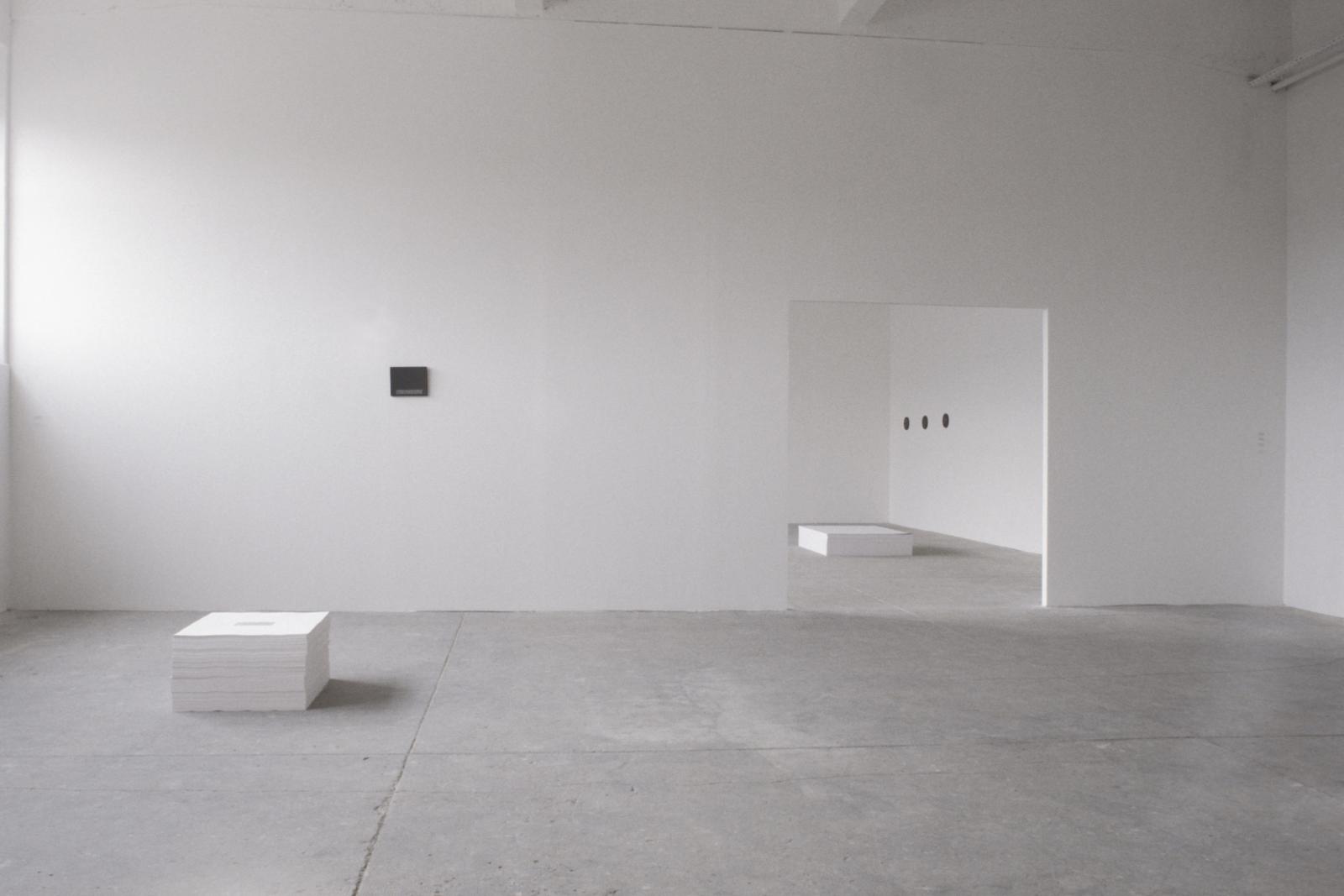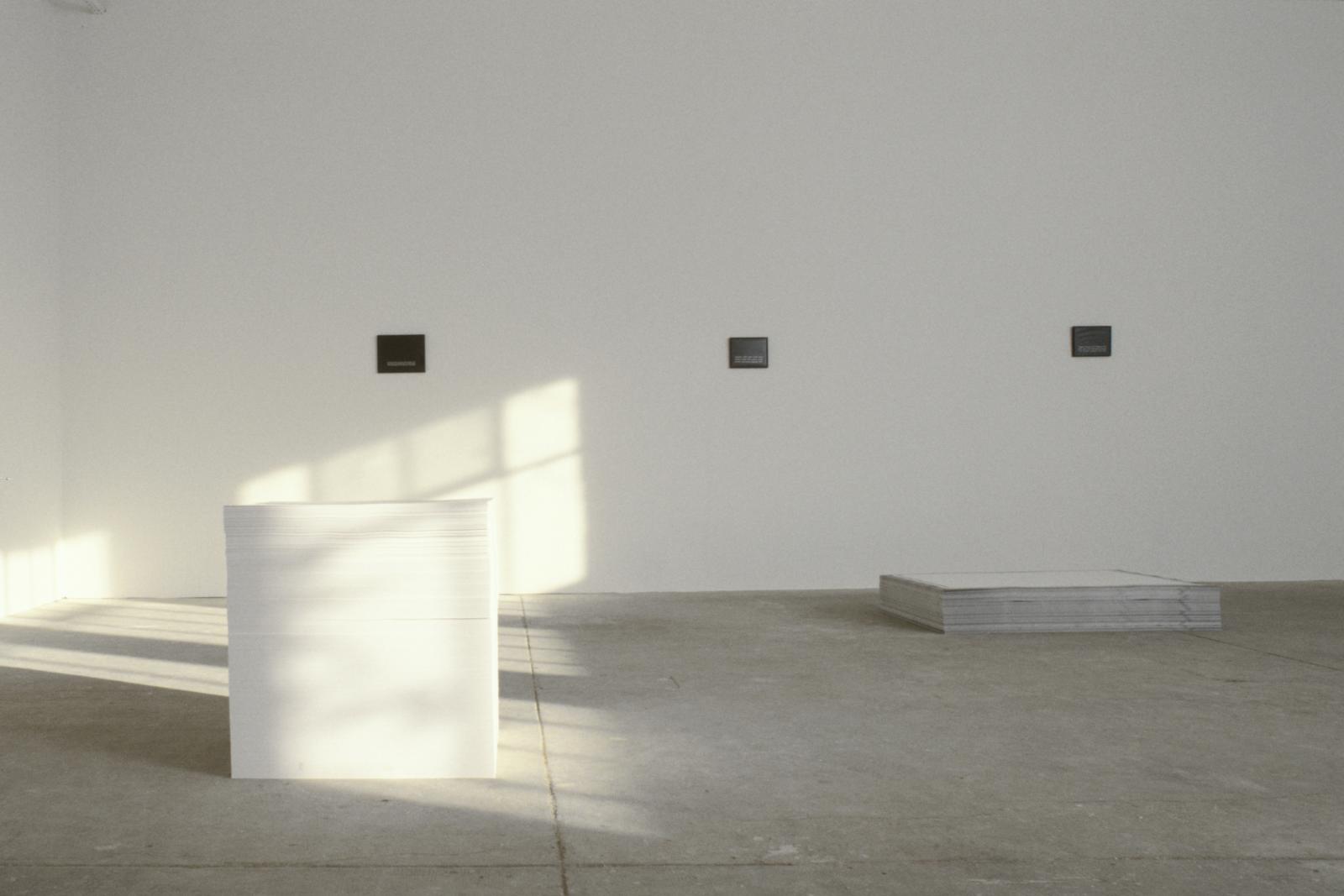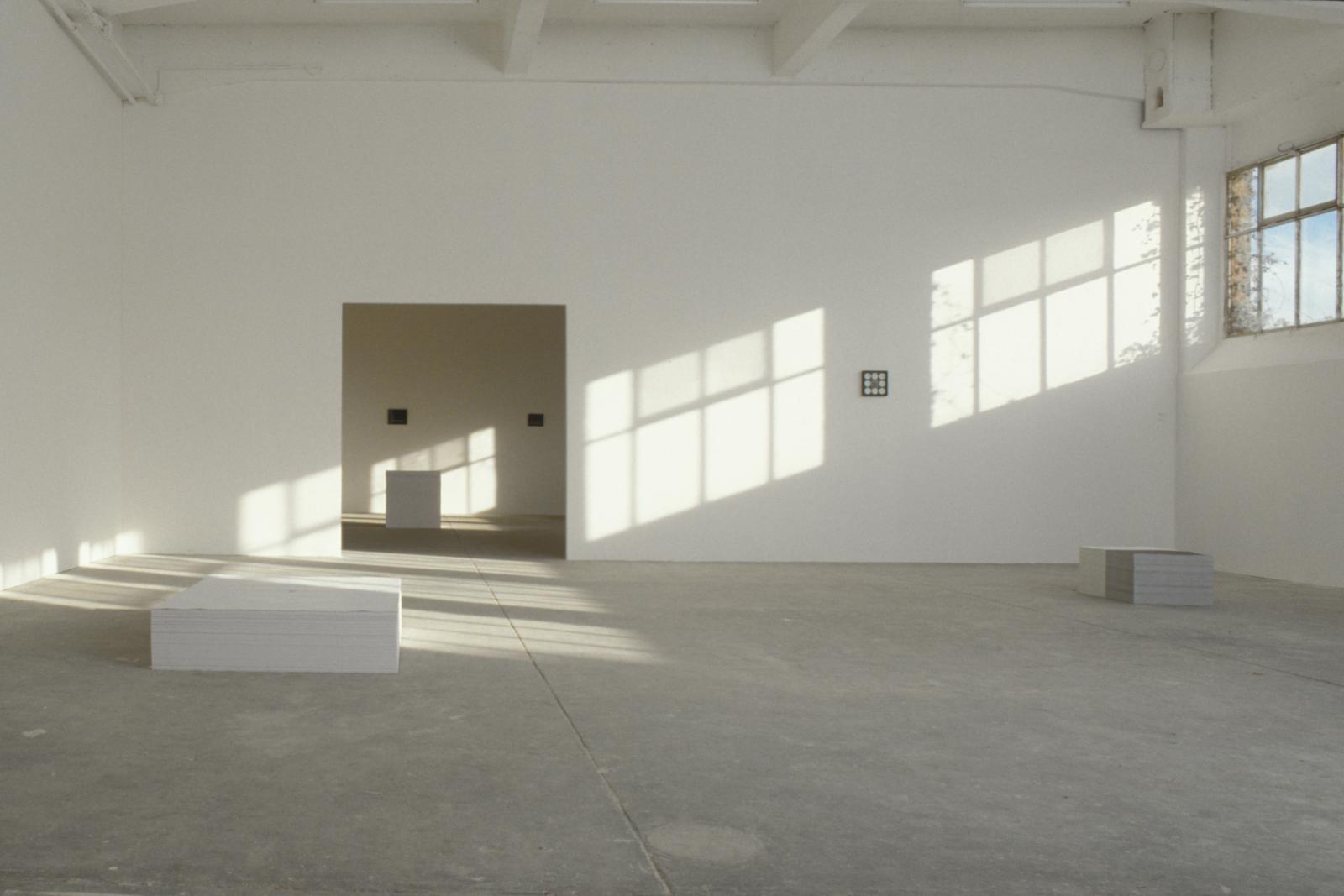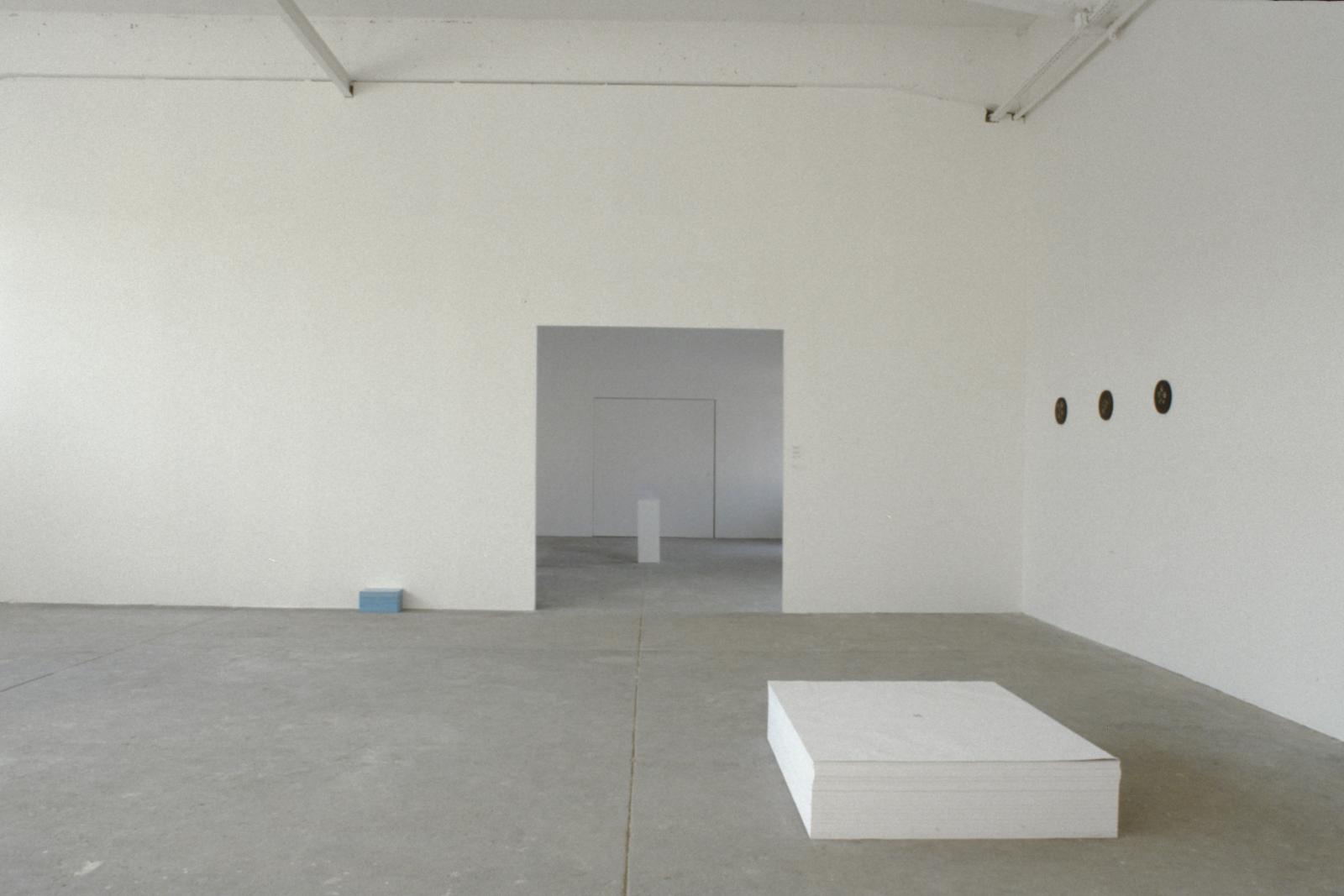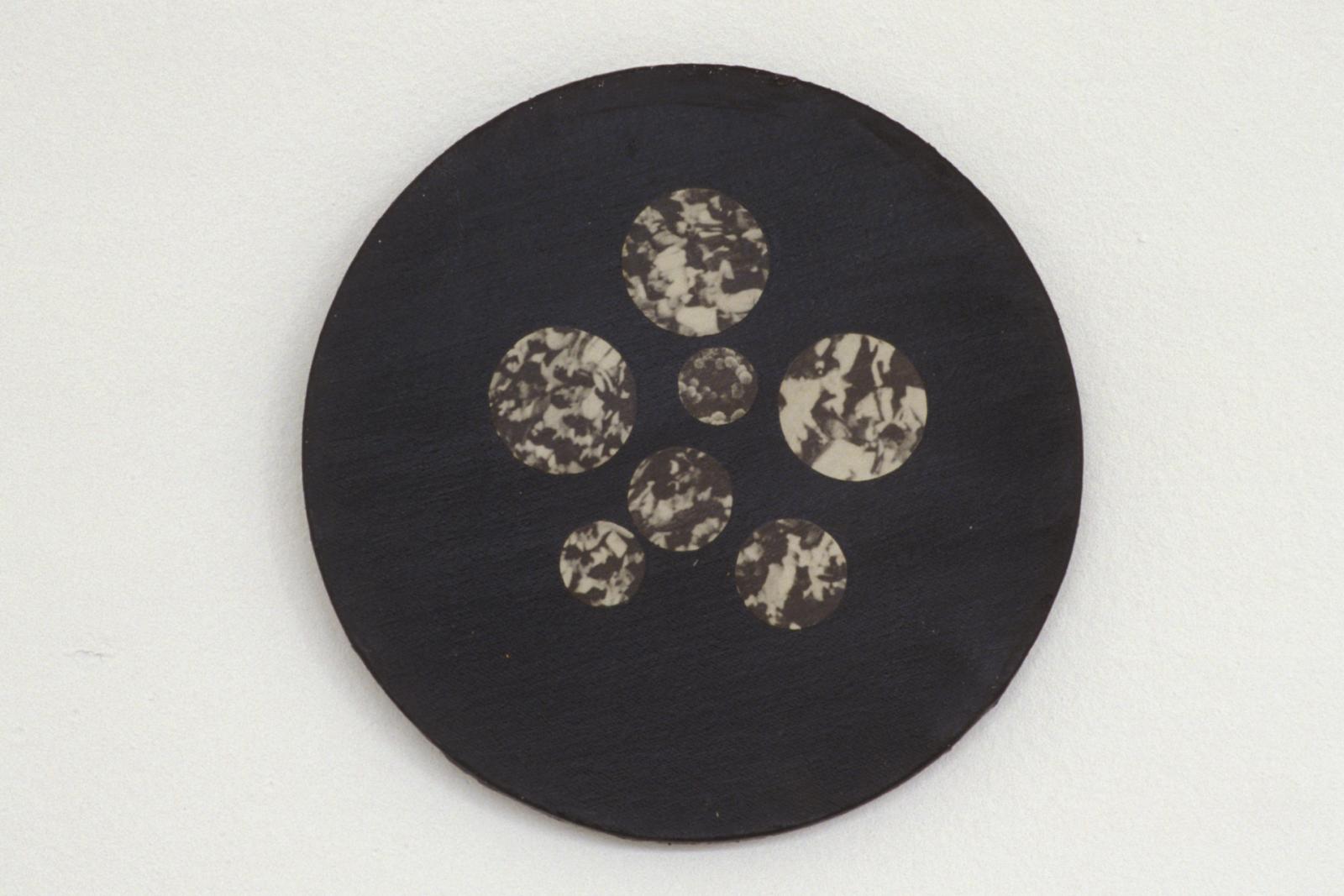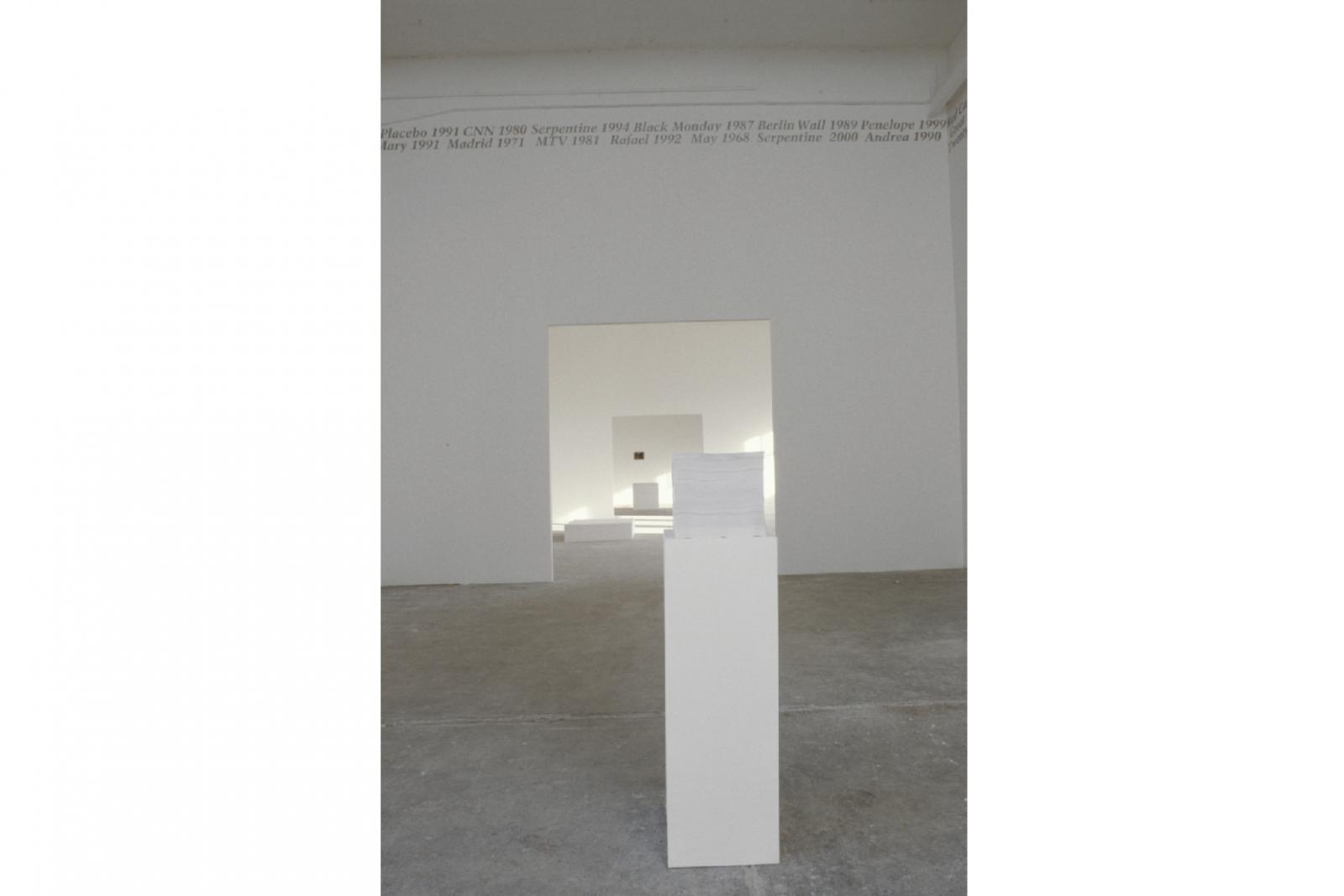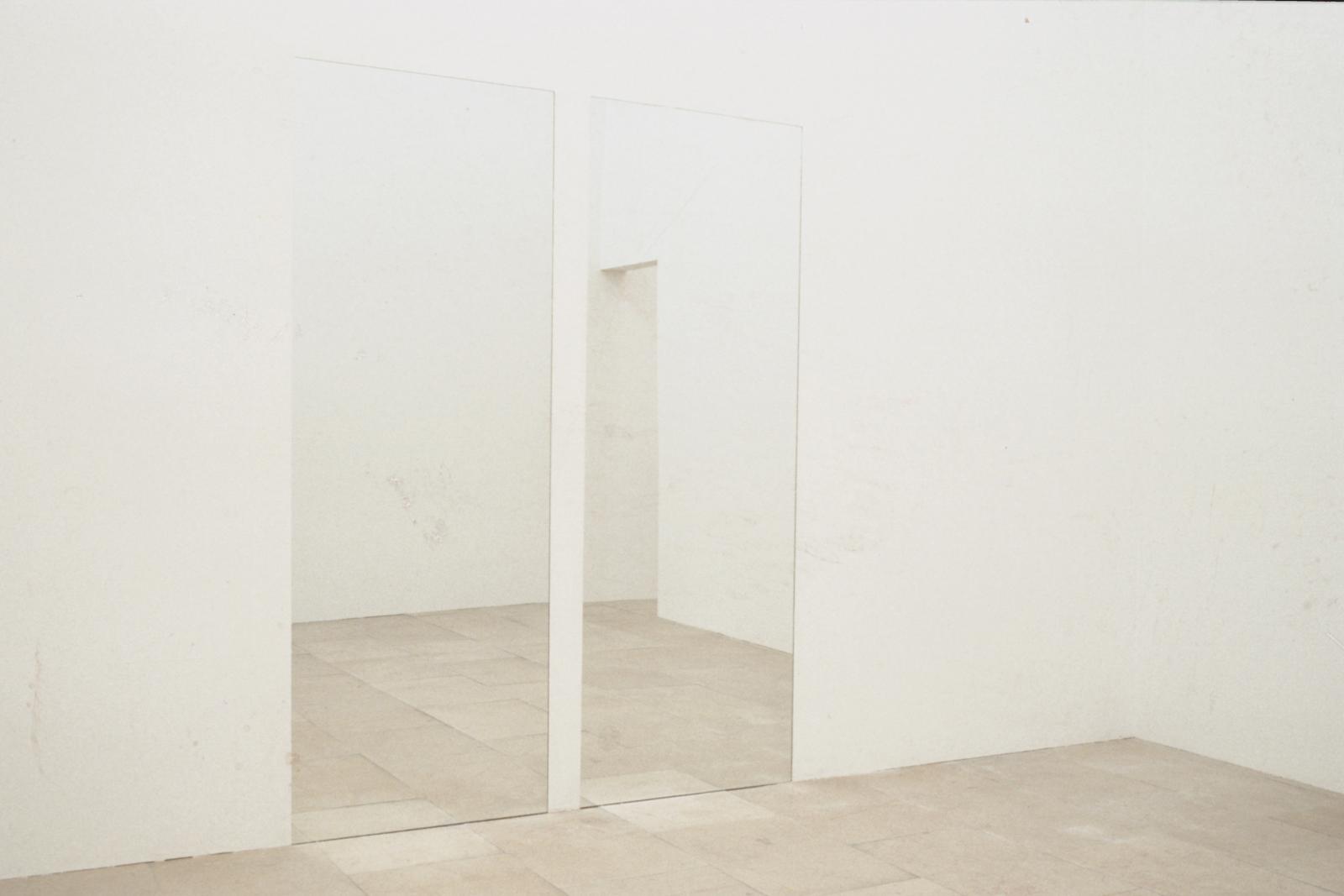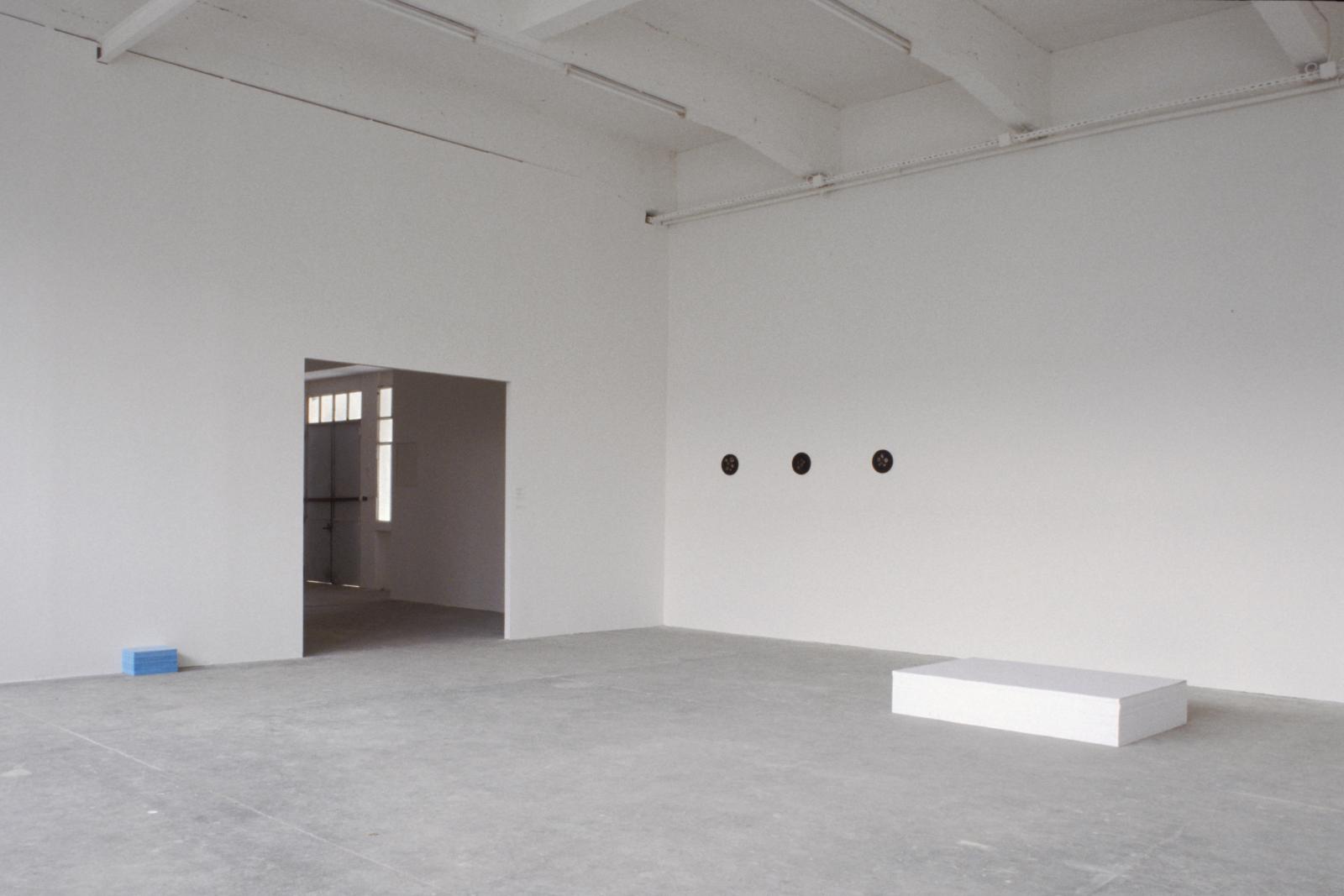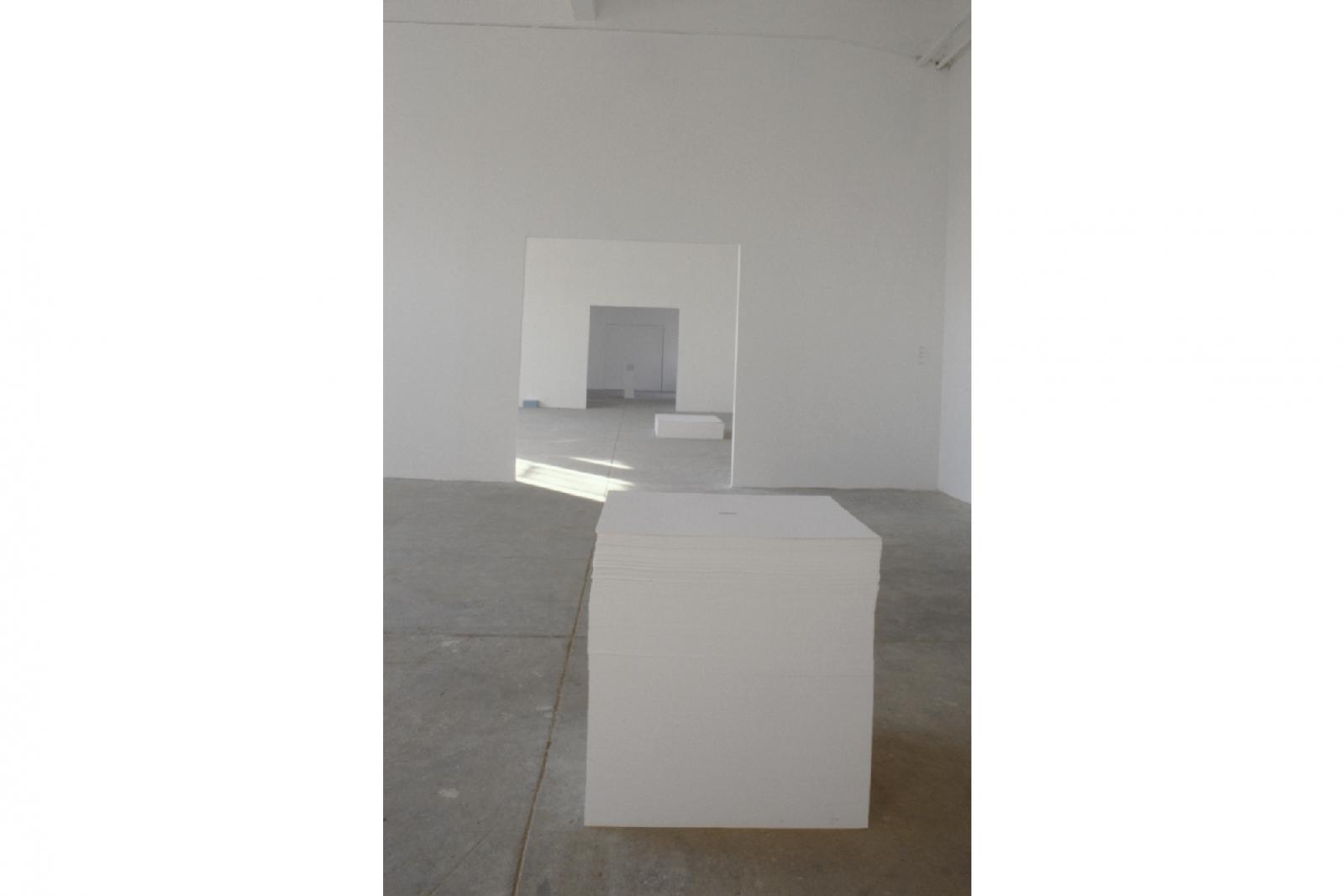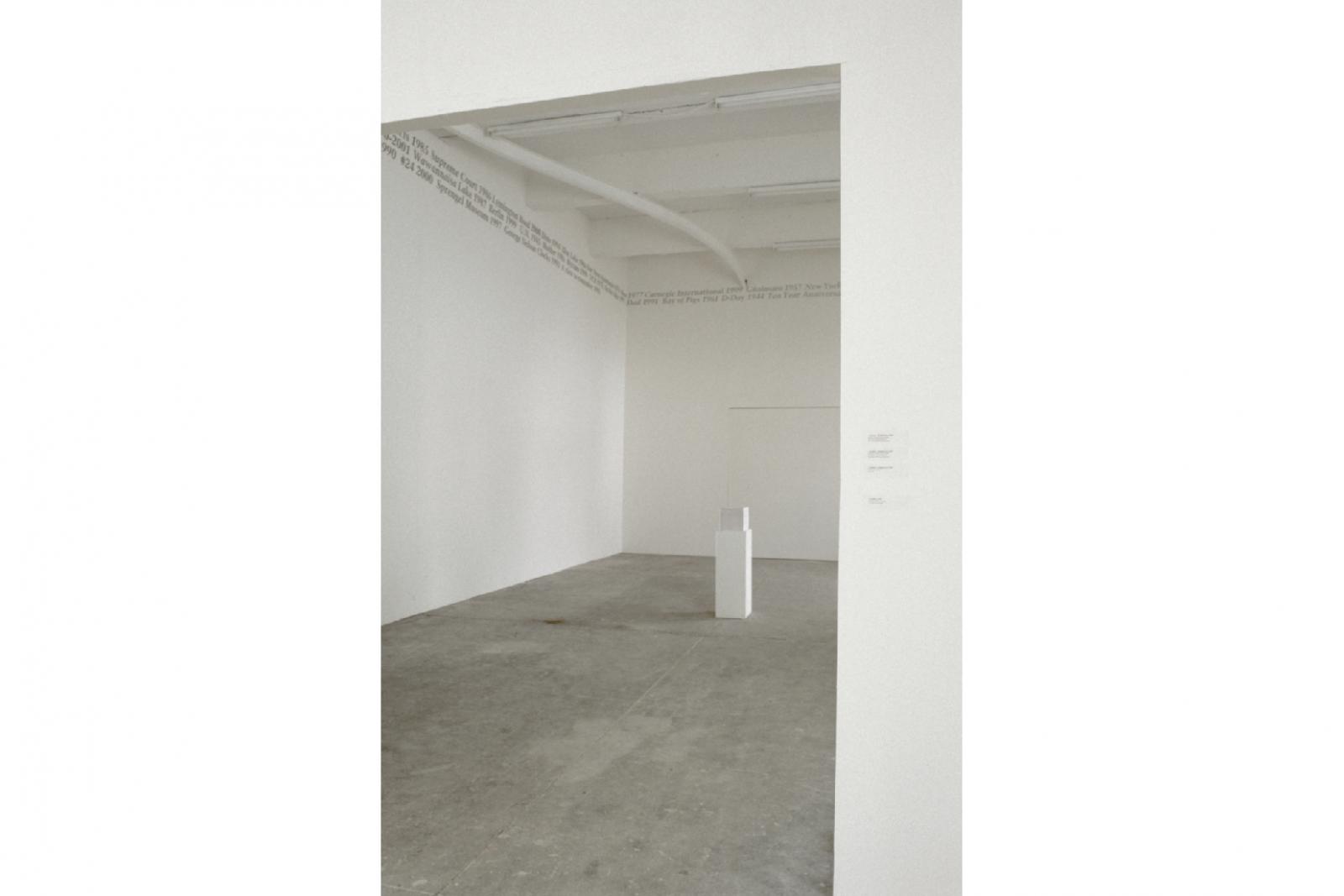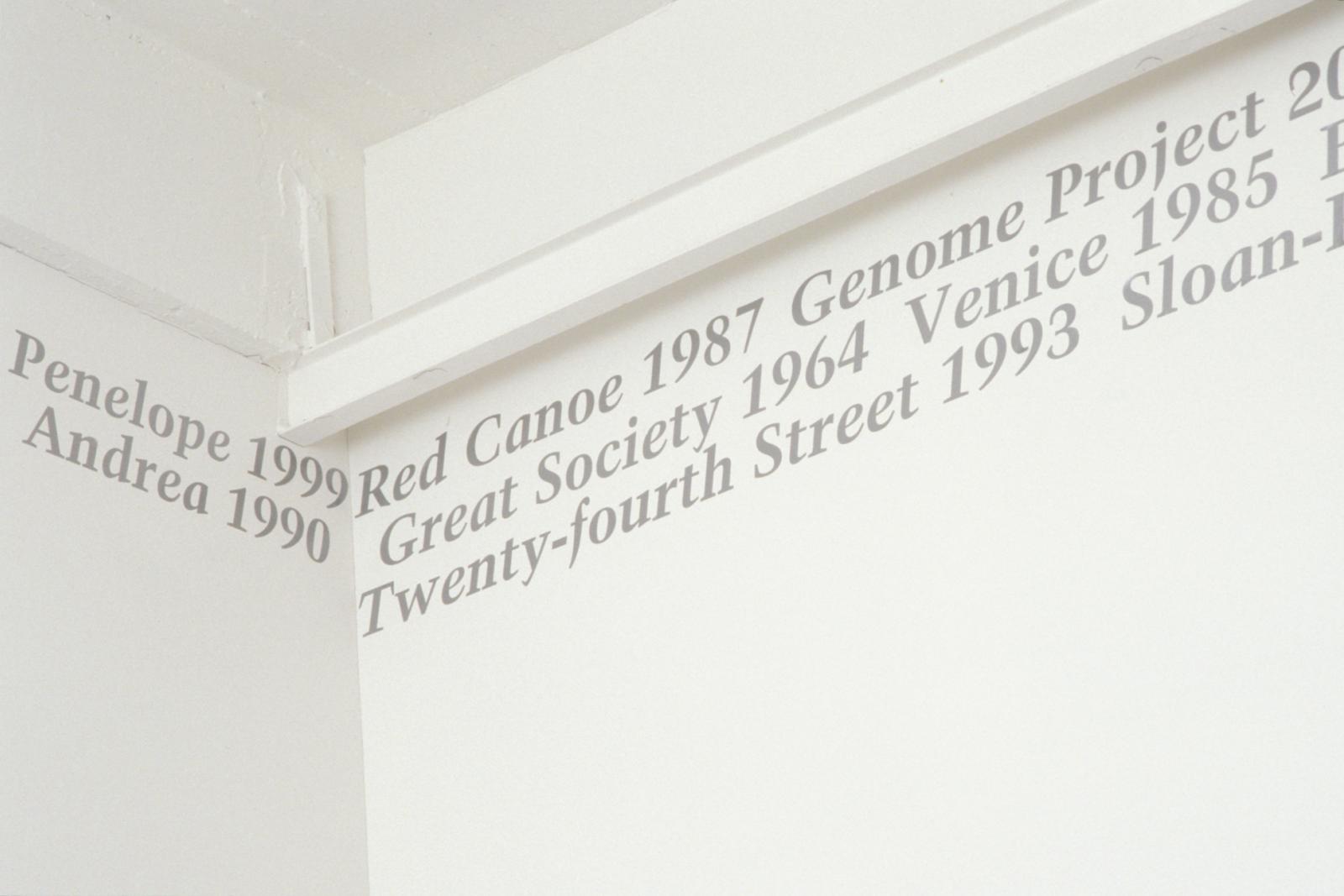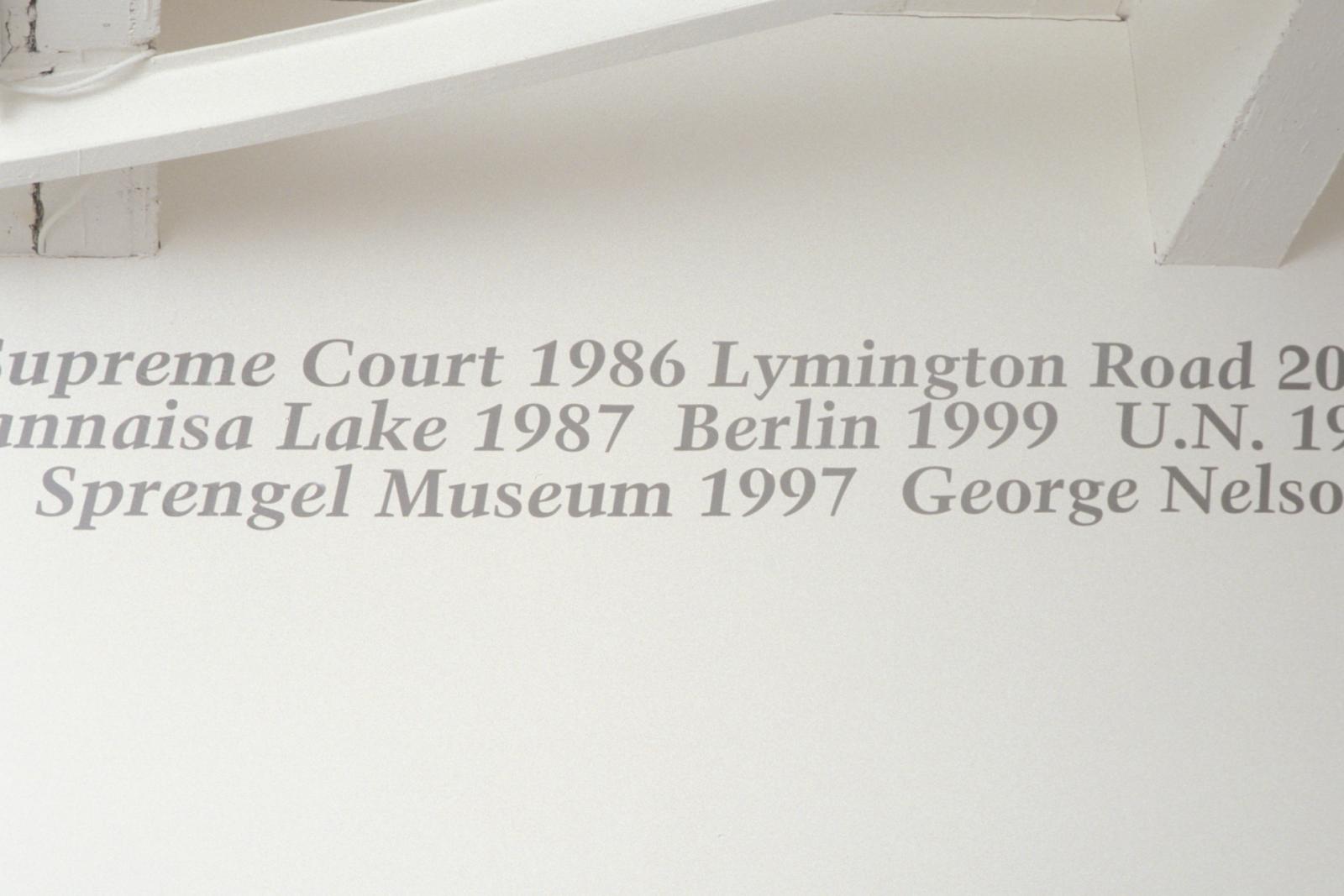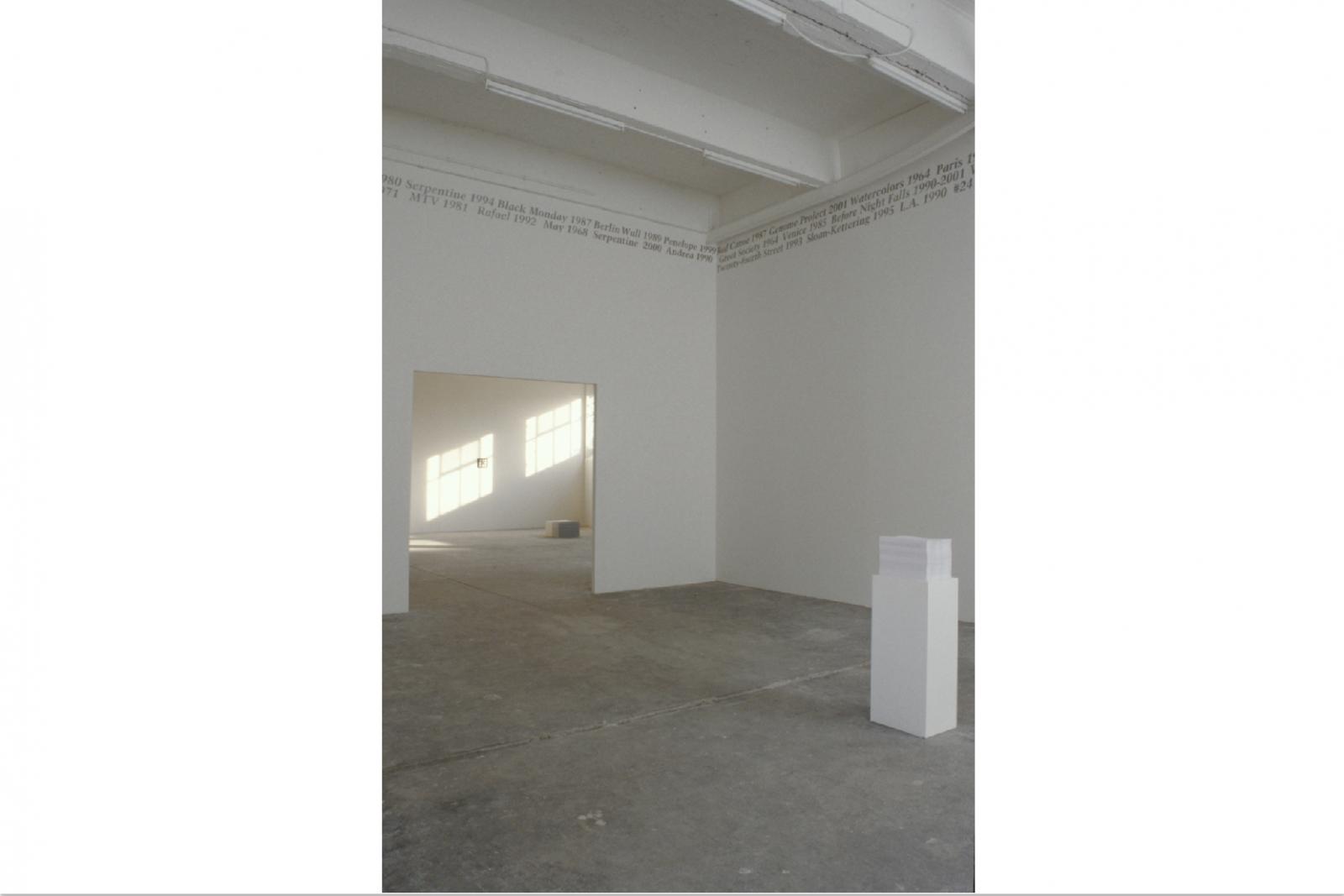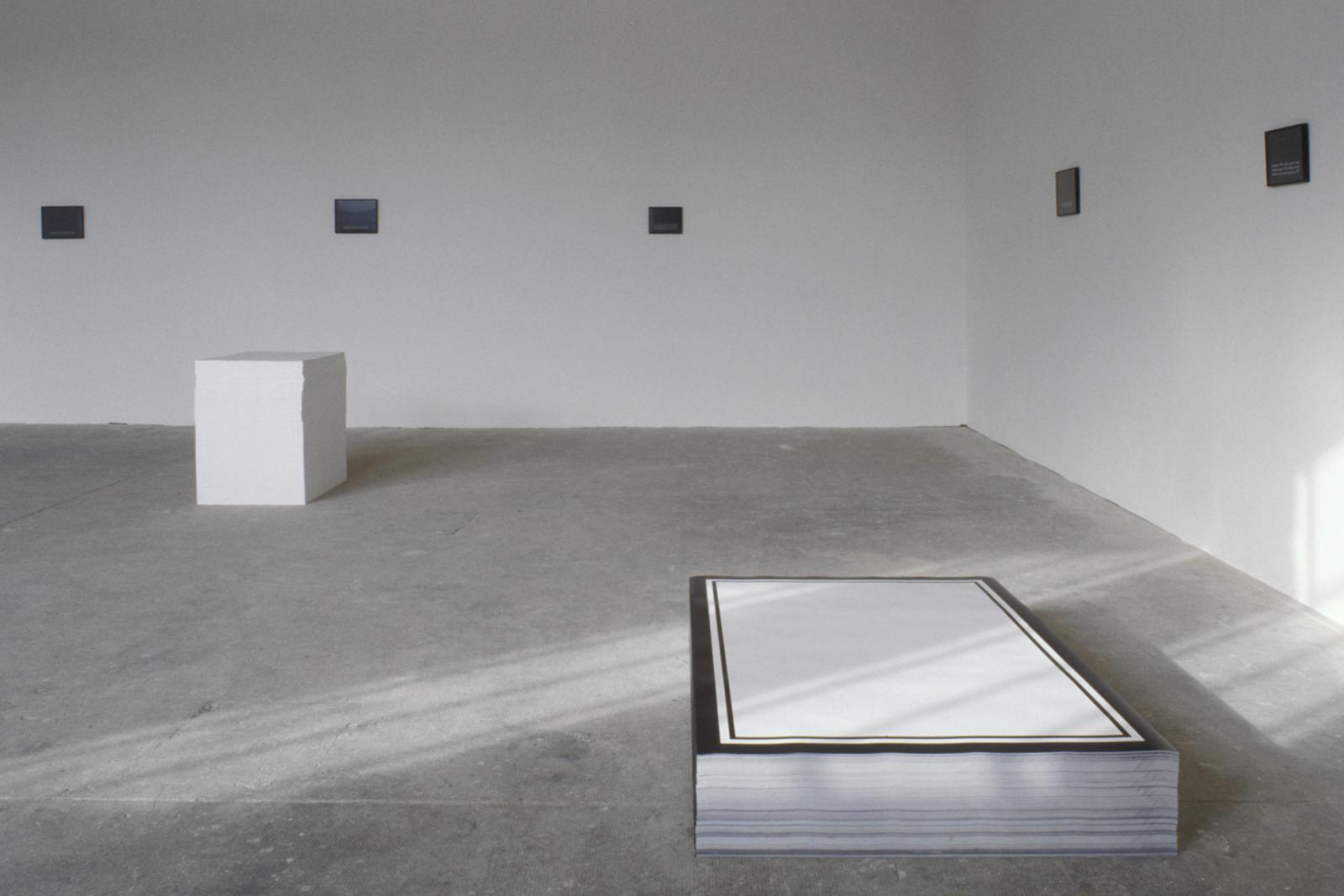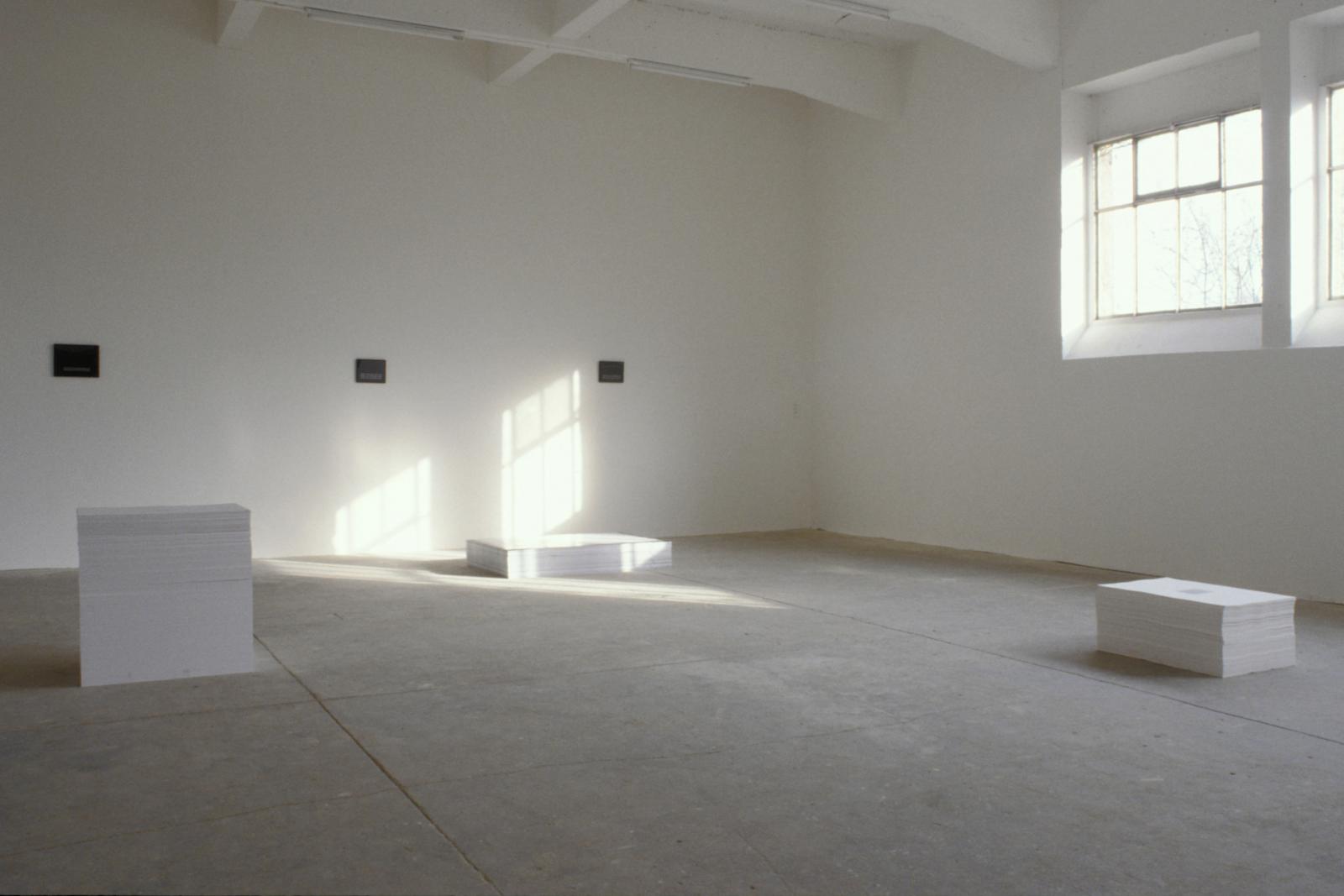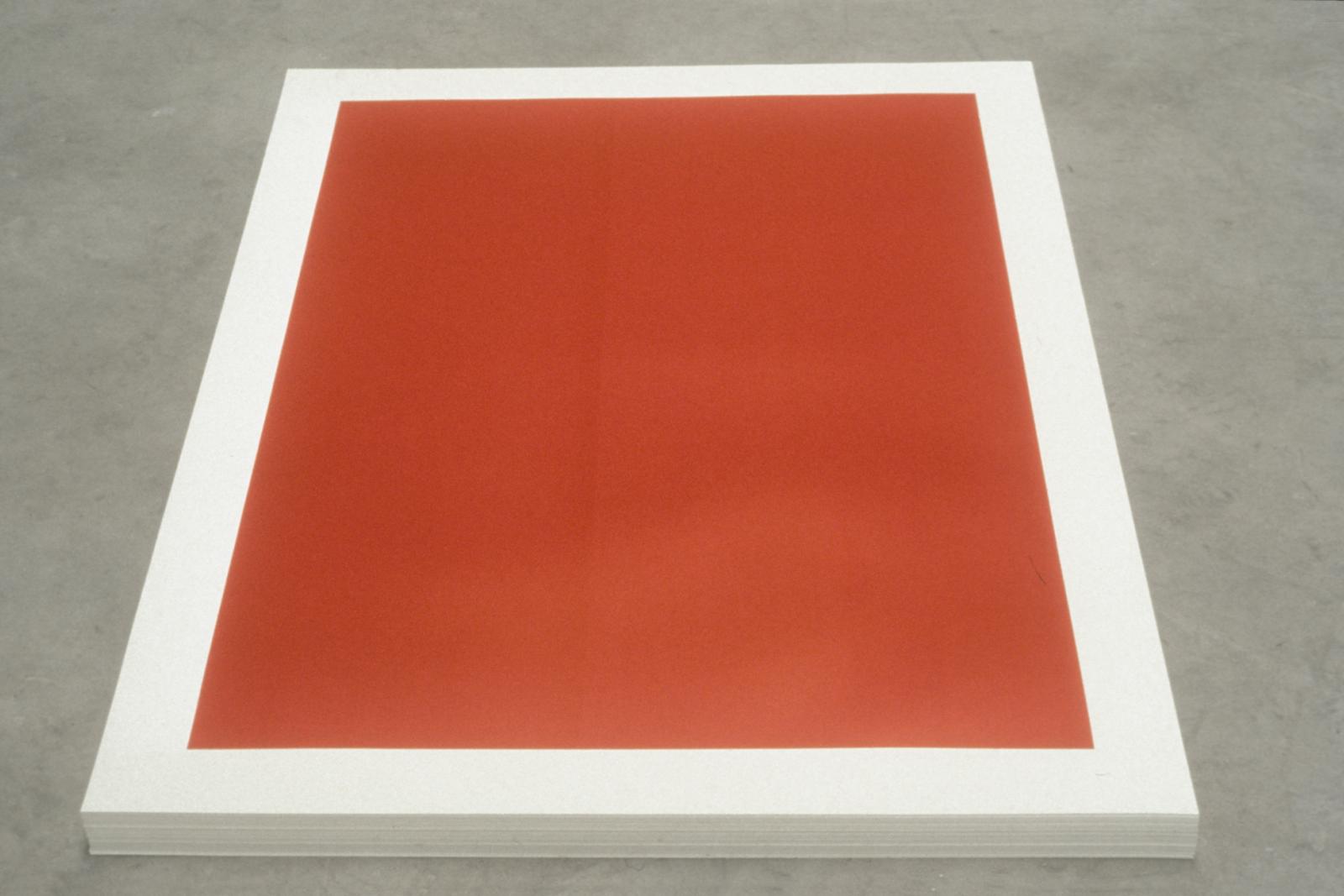Felix González-Torres
FELIX GONZALEZ-TORRES
Felix Gonzalez-Torres (Cuba, 1967 – New York, 1996)
This body of works, created between 1986 and 1991 by Felix Gonzalez-Torres (b. Cuba in 1967, became an American citizen in 1976, died in 1996), selected for their link with the news and most specifically with the New York Times–– which the artist stated was his “main source of inspiration”––is the first exhibition organized in a French institution since the artist’s passing.
The entrance to the exhibition begins with Gonzalez-Torres’ “portrait,” a list presented as a wall frieze with dates and events that were important to the artist and that, according to the system he implemented, runs until 2001 (“New War, 2001”).
The exhibition presents seven “stacks,” artworks made with piles of printed paper sheets. In this case, most of them are two-sided prints, sometimes disproportionately small on very large sheets, taken from New York Times articles. Some of these stacks have never been shown since they were first created, such as Untitled (Still Life), 1989 (Robert Hartshorn Shimshak collection, Berkeley, California). The viewer may pick up sheets as they desire, thus participating in the destruction of the stacks while quenching their thirst for possession.
Seven “Photostats” supplement this presentation and reprise precepts from the “portraits” (strings of dates and events). Double Fear, 1987, uses pictures of crowds found in the New York Times. Made with transfer techniques, they are glued on the exhibition wall, while four paintings (Untitled, (Double Fear)) face them.
Disappearance is an important part of many artworks by Gonzales-Torres. Thus the Stacks, which are made of large paper sheets piled up on top of each other, are intended to be depleted through visitors’ gradual looting, as they may take away the stacks’ constitutive elements. Literally abandoned, in the sense of a desperate, exhausted and erotic abandonment, the artwork casts its fate in the hands of the other. A perverse effect is that this gesture is inscribed within a perfect understanding of the mechanisms of contemporary communication: taking the artwork away is part of the work yet also sometimes accidentally takes its signification away. In effect, the large paper sheets are printed with a short text, a sentence or a word. Sometimes it’s only the title that adorns the artwork; Untitled (National Front) is a stack of red sheets with white borders. The gradual disappearance of the artwork may sometimes be gratuitously thwarted with an unfairness and profligacy whose mechanisms are at the core of life itself. Allowing for “endless copies,” the artwork thus formulates a model and its opposite at once, like these two stacks presented in 1989, one of them stating “Nowhere better than this place” and the other “Somewhere better than this place.” The artwork regenerates through its own depletion: invincible, it does not fear any decrease, does not dread any death, any extinction. Its personal principle brags in the face of life’s own; Gonzalez-Torres explains that the idea for these pieces coincided with a time when he was losing someone. The artwork demonstrates its scorn for the weakness of life’s systems.
On the occasion of his exhibition at Andrea Rosen Gallery in 1990, Felix Gonzalez-Torres wrote this text as a press release: "I've been trying to work on the press release... I feel that this particular installation is about vulnerability, about having nothing to lose, about the possibility of renewal through the re-contextualization of each piece every time it's taken by the viewer. It is also a comment on the passage of time and on the possibility of erasure and disappearance, it is about the poetic of space, presence and beauty of chance. The same chance that makes love possible. lt is about life in its most radical definition or demarcation: death. Like all art, it is about leaving this place for another place, maybe better than this place."
— Eric Troncy, 1993.
